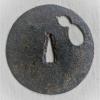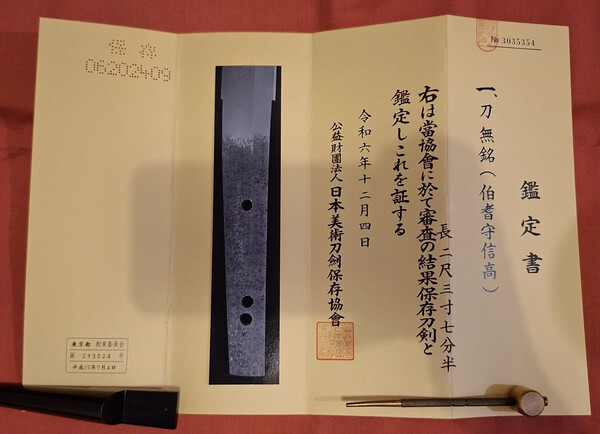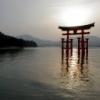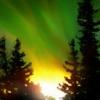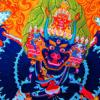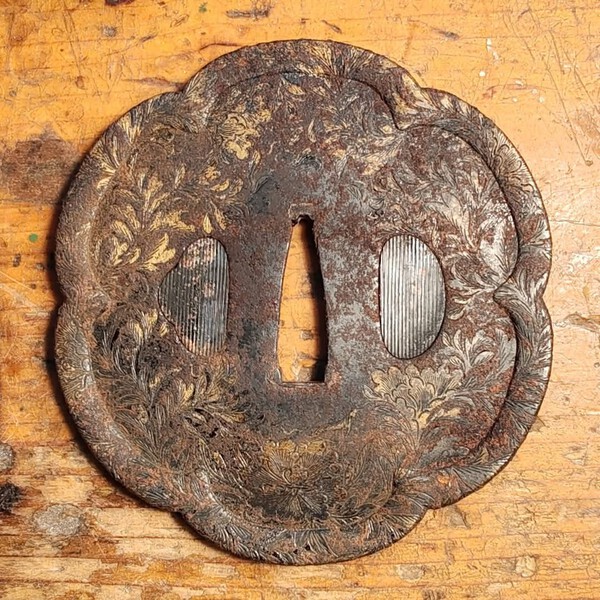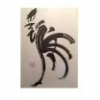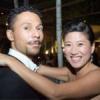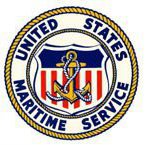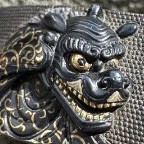Leaderboard
Popular Content
Showing content with the highest reputation since 01/04/2026 in all areas
-
Well I am tad early with the answer but as I am not sure about my day tomorrow, I think I will post it today. Thanks for everyone participating and I hope it was fun. The sword is indeed now mine and I knew the attribution when getting the sword. I did not care about the attribution at all, I just wanted the sword because of size & shape. NBTHK attributed the sword to 伯耆守信高 Hōki no Kami Nobutaka. I would assume that they see this as 1st gen Nobutaka and possibly a Keichō-Shintō sword from very end of Muromachi to early Edo period. Nobutaka is seen as one of Owari sansaku, one of three Owari masters, so he is well regarded smith. However when such a mumei sword gets attributed to Edo smith it kinda demolishes the value. I have seen few nice mumei swords that I thought were Nanbokuchō swords that got NBTHK papers to Hizen Tadayoshi. I happened to see Owari special exhibition at Nagoya Tōken World last summer, back then I didn't know much about Owari smiths, and to be honest I don't know too much now either. I have found few Edo period wakizashi by Nobutaka smiths that have very wide sugata but so far I have not been able to find a reference long sword with very wide sugata. Most of the katana by Nobutaka smiths I have been able to find are just normal early Edo sugata. This was the sword at Nagoya exhibition, by 3rd Nobutaka: https://www.touken-world.jp/search/13753/ I do admit the hada and bit "featureless" hamon might be actually quite close to work on some of Nobutaka line items I found online and in books. However I think 1st Nobutaka work would be better than on this mumei sword. I personally would think like many did in this thread that this would be late Nanbokuchō to Early Muromachi sword. Naoe Shizu would of course be maybe the most optimistic outcome that I can think of and something like Mino Senjuin I could easily see, however it seems I am way off in time. This sword was sent to NBTHK by a small sword dealer at the end of 2024, and I would believe they were not too happy with the attribution that was given out. You get attribution like Naoe Shizu you are very happy and it is a valuable sword, you get Edo smith attribution and the value sinks really hard. I know this was bit of a curveball as it has been for me too. I think all discussion is welcomed and would be also fun to have some discussion, as unfortunately we cannot view and discuss the items in person.9 points
-
Dear fellowship, First of all - best wishes for the New Year. Secondly - my latest and newest acquisition that found its way into my modest collection through an item exchange between a collector friend and my self. Iron Tsuba, 8,5 cm x 8 cm x 0,5 cm, intricately carved, open work and with different inlays of metal spanning gold, silver and copper. Mei: “Kosyu Hikone Jyu Mogarashi Nyudo Soten Sei” (earlier translation by: Kazushige Tsuruta - who believed the signature genuine in 2015 - judged from photographs by previous owner). My photographs are NOT in any way professional sorry… Any comments are as always welcome. /Soeren8 points
-
The mei looks Sukekane to me. 備前國助包 - Bizen no kuni Sukekane8 points
-
Quite entertaining, especially for novices who don't know much about Nihonto.7 points
-
Happy New Year all. Reviving this topic from mid last year as I wanted to share another piece I acquired and how the information provided in this thread helped me make an informed decision. The Nebikimatsu theme was completely new to me and members of this wonderful forum helped crack it. So when I came across this piece described as "feathers," I immediately recognized what it actually was...and was quite thrilled as it appears to be very rare motif in Echizen tsuba. It's fitting that the theme is associated to the new year, and if you are ever in Japan over the new year period, you will definitely see the pine decorations on display around shop entrances all around...like this massive one I found outside a Seibu in Fukui City on my most recent trip. Wishing everyone a great 2026. All the best. Damon7 points
-
7 points
-
6 points
-
Should be this item https://www.metmuseum.org/art/collection/search/246176 points
-
Pointless giving it to any museum. They are not scarce enough to be unavailable if they want one, and most museums let items rot in the store room. That's the best way to make sure an item isn't appreciated. You'd be better off keeping it, or selling to a collector where it would be appreciated and preserved.6 points
-
If I had to take a slightly wild but slightly educated guess, I would say it's an official order to a retainer/ally, notifying that ally of his new posting. The first letter is 就 which indicates its an order. The far left is the addressee, and I'm not sure but I think its 大嶋囗囗どのへ (To the Honorable Mr. Oshima), and if I jump to conclusions I can imagine it is a letter to Oshima Mitsuyoshi, a longstanding ally of Tokugawa, who was a really, really old man by the time Tokugawa was Shogun, and Tokugawa I think awarded Oshima some cushy posting where he could live out his days in comfort.6 points
-
Yes, it's one of the few remaining examples of what folks in IT diplomatically refer to as "the Geocities era of web design." It's a historical artifact in itself.6 points
-
6 points
-
Hi everyone, I wanted to share a reflection after completing my first full year in this incredible field. Over the years, I have been an avid collector of many things, ranging from precisely catalogued historical multiples and rare editions (such as coins and books) to the more subjective realm of fine art and contemporary pieces. I was used to the world of almanacs and the subjective opinions of art critics. But after one year of being entangled in the world of Nihonto, I’ve realized this is something else entirely. What fascinates me most, and what has truly trapped me in this hobby, is the unique intersection of high art and the rigorous Japanese legal framework. Unlike any other field of art, we are dealing with a mandatory government registration system that defines a sword’s existence as a legal art object. But the real magic happens when this legal status meets the expert judgment of the Shinsa. In the world of fine art, you often chase a signature. Here, we look for a soul. When a group of experts gazes into the jihada and hamon, they aren't just checking a box; they are identifying the hand of a master who lived centuries ago. They are giving an anonymous piece of steel its name and its history back. This strict, tiered hierarchy, from Hozon to the Juyo and Tokubetsu Juyo levels, feels to me more than just a ranking, it is a path of merit that honors the spirit of the smith. To hold an object that has been scrutinized by such a body, and to find it recorded in a work like the Juyo Token Nado Zufu, creates a level of gravitas I have never encountered in any other hobby. It transforms a beautiful blade into a verified vessel of both history and spirit. Even after a year of navigating the challenges of the market, encountering gimei, fake documentation, and the complexities of mumei attributions, my respect for this system has only grown. It’s not just about owning art; it’s about the certainty that comes when art, law, and a thousand years of tradition meet to protect the soul of the Japanese sword. I’m curious if others here, especially those coming from a background in fine art, had a similar realization? That the unique Japanese system of judging and registration is actually what sets this apart from every other form of collecting?5 points
-
Just want to share.. I took a gamble and picked up this sword a few months ago from the son of a WW2 veteran practically sight unseen. The vets son told me the sword has sat in the closet since he could remember. The sword is signed 士魂明督之作 Shigon Akisuke No Saku and dated 1945. A smith I’ve never heard of before nor have I seen another sword made by this smith. The polish and fittings are in excellent condition. The hamon is flamboyant the jigane is tight. any comments are welcome.5 points
-
yes Woody Hall will do an amazing job with it. He has a very beautiful and unique style thats far better than anything that comes from the dealers in my opinion. It looks like you might only need a shiage togi . You might want to consider a slight kissaki shaping as it looks slightly mishapened but there s really nothing wrong leaving it the way it is. He s the only togishi I ll send my blades to and he has done a number of shiage togi for me. Each blade came back looking like a juyo sword lol5 points
-
5 points
-
I'm working on compiling a list of the main koto swordsmithing schools, the province(s) they worked in, and the years they spanned for a project I hope to share with the NMB shortly which I think many will enjoy! I have a public Google Doc link which I'll share below that anybody can access and I've added a number of schools and probably have a lot of mistakes that I've made along the way. This is where I hope that NMB members can help out in helping me curate this list and refine it. I've probably missed a number of key smiths, dates, schools, etc. and I'm hoping that some collective reasoning can help me past the finish line. https://docs.google.com/spreadsheets/d/1NiQi34M8brY-21pM2N3z1emOqvEutC65F4godYsvJM0/edit?gid=0#gid=0 Many thanks in advance and I hope what I've got cooking up will be of use to many once I'm finished up! I've also added a page for Shinto schools but I haven't started on anything as I don't really know how they should be classified outside of the Gokaden (maybe just province?) but if you want to add them, feel free! The data will be used.5 points
-
YASUHIRO, HIZEN GENDAITO SUGATA: SZ MEI: HIZEN NO KUNI JU YASUHIRO SAKU (TACHI MEI) DATE: NONE c. 1930’S NAGASA: (26.125") OVERALL: (34.125") MIHABA: (1.1875") KASANE: (0.25") SORI: 0.5 NAKAGO: UBU MEKUGI ANA: ONE YASURIME: SUJIKAI MUNE: IORI HADA: MIXED HAMON: NOTARE IN NIE DEKI BOSHI: KOMARU HORIMONO OMOTE: NONE HORIMONO URA: NONE HABAKI: 1 PC. SOLID SILVER SHIRASAYA Flawless Gendaito by the sword smith Hizen Yasuhiro. Yasuhiro was born in 1910, he worked under Akihide as a Rikugun Jumei Tosho and won 2nd seat in 1941 (see details below). His lineage can be traced back to the 8th generation Hizen Tadayoshi and was the brother of Motomura Kanemoto. His work was first exhibited in 1936 from which point he won many awards until 1944. Post war he submitted blades to the Shinsakuto-Ten. Yasuhiro worked in the Hizen style with a prominent hada showing the Hizen konuka mixed with ko-itame and masame. Hamon begins as a gentle Notare transistioning to suguha. Within the hamon are clouds of Ara-Nie. The nakago is ubu with one mekugi ana. It is signed tachi-mei in the Hizen style. This sword comes in Shirasaya with a solid silver Shonai Habaki References: Hawley’s Pg 926 (YAS 680) Gendaito Meikan Pg 173 Hizen Handbook Pg 283 Sesko’s, Swordsmiths A-Z pg 1264 Courtesy of Sesko’s, Swordsmiths A-Z: YASUHIRO (保広), Shōwa (昭和, 1926-1989), Saga –“Hizen no Kuni-jū Yasuhiro” (肥前国住保広), “Yasuhiro” (保広), real name Motomura Tamotsu (元村保), born 1910, he studied under Hisahiro (久広) and worked as rikugun-jumei-tōshō, jōkō no retsu (Akihide), Second Seat at the 6th Shinsaku Nihontō Denrankai (新作日本刀展覧会, 1941)5 points
-
Here are some bit lesser known and smaller groups that could maybe added, although some might be too insignificant, and some of these might already featured under some other classification. For me it is bit difficult to draw lines, and lineages can vary. File was view only for me. School - Province Daruma - Yamashiro Heianjō - Yamashiro Kanabō - Yamato Shiga-Seki - Owari Inuyama - Owari Odawara-Sōshū - Sagami Fuyuhiro - Wakasa Asago-Taima - Echizen Yamamura - Echigo Iruka - Kii Kaifu - Awa Tosa Yoshimitsu - Tosa Wake - Bizen Ishidō - Ōmi (later spread) Zenjō - Mino San'ami - Mino Mizuta - Bitchū Tatsubō - Bingo Kai-Mihara - Bingo Goami - Bingo Dōtanuki - Higo5 points
-
5 points
-
Maybe old news to some of you, but I found it fascinating how the tension spring for this latch was engineered. I put together an infographic to show how it works. The “spring” is a small, hardened piece of metal. There’s no solder, glue, or fastener involved. Instead, it’s precisely sized and held in place by tension and geometry; and can only be removed when the fuchi is separated from the other fittings. It’s no surprise that this piece often goes missing on some examples. Another good reason not to disassemble the Type 95 Gunto. (This is from a loose tsuka and fuchi that came to me without a blade). -Sam5 points
-
4 points
-
4 points
-
You can usually tell a sword has been shortened without removing the tsuka and inspecting the nakago, the geometries/measurements/overall sugata will be strange compared to what is expected for a given school or line of smiths IMO4 points
-
I was reading the way it was written on the tang. Here's some info from Sesko: AKISUKE (明督), Shōwa (昭和, 1926-1989), Tottori – “Shikon Akisuke” (士魂明督), real name Yata Monji (矢田門二), born August 26th 1899, he was working as a swordsmith from about 1942 onwards, the prefix shikon (士魂) means “Samurai spirit” (see picture right) John C.4 points
-
Useful article here from Markus Sesko on Tensho vs Keicho suriage: https://markussesko.com/2018/04/25/tensho-suriage-and-keicho-suriage/4 points
-
4 points
-
Kosyu Hikone Jyu Mogarashi Nyudo SOTEN Sei Goshu/Kosyu Hikone Ju (江州彦根住): "Resident of Hikone, Omi Province (Goshu)". Mogarashi Nyudo Soten Sei (藻柄子入道宗典製): "Made by Mogarashi Nyudo Soten".4 points
-
4 points
-
Greetings to All, Recently, I acquired a rather rusty tsuba as part of a deal for a Washida tsuba with another collector. This piece was thrown into the arrangement by the seller to meet the requested price range. Despite its condition, it showed some promise. The tsuba is signed Kyozan Mitsunaka + (Kao) ({嚮山 光中(花押)}) in kin-zogan. Based on the pictures, it appeared to feature brass hira-zogan of peonies and arabesques. Despite the rust, none of the inlays seemed to be missing - testament to the craftsmanship. The subject and execution also align well with works by Washida Mitsunaka or the Washida school. Seeing its potential, I decided to accept the deal, and both tsuba landed on my desk. Believing the piece was worth restoring, I sent it to Manuel @C0D for restoration, and I wasn't disappointed. Manuel did an outstanding job removing the rust and re-patinating the brass. If Manuel would like to elaborate on the restoration process, I would welcome it. The gamble paid off, as the final result is quite pleasing. As you can see, the tsuba has been brought back to life: I hope you enjoy it as much as I do. Regards, Luca P.S. I have to thank Manuel for allowing me to use the pictures he made.4 points
-
That picture of yours is stunning Kirill. When you combine high quality sword and high quality photography the result is amazing. I've been on a good roll on NBTHK monthly kantei but I must admit my real kantei skills suck. As I've been doing it for several years it is easy to catch some pointers that they sometimes use, had to check that I got that one correct. For example "The hada is visible and is a unique hada" in their English description points to zanguri. Usually that is pushing it to Horikawa and for 2 character signature I think Kunihiro is the logical answer. For me this is book knowledge that I have, in real life I could not say what is zanguri hada, as I don't have too high real life kantei skills. I saw this ōdachi at Nagoya Tōken World last summer, and it is my favorite Owari sword: https://www.touken-world.jp/search/127485/ maybe massive kissaki and strong width might hint that sword in OP could have been originally a big one like this one. Of course as I like ōdachi that would be my wishful thinking. I have seen the even larger 1620 dated Kanetake ōdachi at Atsuta Jingū few times but I don't like that much maybe as much. So far I have not yet seen the shorter Kanetake ōdachi of Atsuta Jingū, maybe some day I will. Of course NBTHK might have more than likely the most probable outcome. I just personally would wish they might have had more general attribution, like mumei Owari - Keichō-Shintō etc. Of course that is their style to go for direct attributions for specific smiths, I don't personally like that but I understand how that is what people actually want. Most would be probably very disappointed in just general attributions that would state roughly province and time period. Big thanks of all the comments and discussion, it is really much more fun to have discussion than just think about all the things alone.4 points
-
It seems to be a nice sword with very strong masame. If trying for Tokubetsu Hozon, I would submit without the old paper from blank beginning. As the NBTHK has attributed it to Sue-Hoshō they see it as a Muromachi era sword. By default it would be that mumei Sue-Hoshō can only achieve Hozon level. There might always be an exception but so far all 17 NBTHK attributed mumei Sue-Hoshō that I have data on are all Hozon, even though some of would be good quality. Please send us pictures after Woody has worked on it.4 points
-
4 points
-
Dale, this TSUBA seems to have a "true" ORIKAESHI folding rim. The description of the SUKASHI as KATABAM/wood sorrel is correct. Apple blossoms have five petals like most ROSACEAE.4 points
-
We always remember our first. I was fortunate to be invited to visit the home of a German collector in May 2024, where I was given the opportunity to study 3 Juyo blades in hand. I held the nakago of the first blade so tightly and so intensely, the owner even commented on the heat transfer. He was probably hoping I wasn't related to Uri Geller.4 points
-
It is a great pleasure to meet you all here. I am an independent amateur netsuke collector from China. Inspired by the insightful contributions from the members of this community, I would like to share some observations regarding the netsuke market in China. Due to complex historical and cultural factors, there are virtually no large-scale forums or dedicated platforms for netsuke collectors in China, leading to a significant lack of information sharing. However, because of our linguistic and cultural affinities with Japan, the Chinese market sees a large volume of netsuke "re-imported" from Japan. Unfortunately, about 95% of these are fakes. The notorious "Shozan" and "Gyokuseki" signatures frequently discussed here are, in fact, ubiquitous on the Chinese secondhand market. Setting those aside, there are occasionally hidden gems to be found. (It should be noted that China maintains very strict regulations on ivory; therefore, I personally only collect boxwood netsuke). I have acquired a few representative pieces that I would like to share with you. The first is a Japanese Hyottoko mask netsuke, and the second is an Okame mask netsuke. While the craftsmanship of these two pieces may not be considered exquisite, they both possess a distinct patina that suggests a clear sense of history. The Hyottoko mask is signed "Suizan" (水山). I am quite unfamiliar with this name and am certain it does not belong to a famous master. The other piece is unsigned. Regarding their age, I personally date them between 1850 and 1920. While this period may not be the most "ideal" for some collectors, it is quite acceptable given their acquisition price. Regarding the mass-produced forgeries, I have learned that they largely originate from provinces in Southern China. There are specialized sellers in our secondhand markets dealing specifically in these items, priced anywhere from a few dollars to tens of dollars. Many people fall victim to these scams, and it is a great pity that we lack a platform like this one to help collectors identify and correct such errors. Thank you once again for your sharing. Greetings from China.4 points
-
4 points
-
4 points
-
Agreed, the Shinsa is unique in the world as a government sanctioned event that authenticates an entire asset class and accessories. To have experts that have to complete decades of study to recognise the artist is just incredible - I am unaware of any other area like it - be it art, science or any other activity. That there are some many smiths and traditions it is incredible how much knowledge you need to have to become a recognised expert and even then when you speak to a master authenticator with 40 years experience they will still say they are learning. It is remarkable. Almost super human. The closest we have to this in the west is the individual authentication boards or committees for an artist. But even then these groups focus on one or maybe a few artists not an entire asset class. As we move forward I would love to see some of the western art influence this extraordinary eastern art. Things like having a catalogue raisonné for the big named smiths would be a massive move that would greatly improve this art form and have many advantages (aside from the fact that you will finally be able to see all the recognised works of the smith in one collective work - which in itself would be wonderful.) I hope this will happen sooner rather than later. But for now like you I am completely and utterly engrossed. There is no art form like Nihonto.4 points
-
@Rhizosphere Depending on your location in the United States, you may want to attend one of the four sword shows around the country to see if you can find something in person. This helps immensely compared to shopping only from photos. The Las Vegas show is coming up in a couple of weeks.4 points
-
Markus will get back to you. As pointed out it is the holidays and to be honest, I think at times he gets overwhelmed with requests. I had written him prior to the holidays and he wrote me back yesterday saying he had gotten sidetracked twice while meaning to write. For me it is no big deal, I am in no rush. Point he is very dependable and will write you back. Be patient grasshopper. If you want to know more, I would go with Swordsmiths of Japan by Markus Sesko. You can order any of his books on the LULU website. If you want something cheaper, I have a copy of Hawleys (Brown one). It is worn and the corners have been bumped pretty hard, but the pages are intact and I would let it go for $100 plus S/H and any related fees.4 points
-
Yes, typo on my part. Thanks Uwe for catching that. The mei reads "Bifu Ju Nin Norisuke Saku".4 points
-
I sometimes write in English what I am reading in Japanese. Makes for some rather interesting sentence structures. Like Scogg, I frequently edit my posts later. Some are just better at English while others are better at math.4 points
-
Sadly no signature on the tsuba, but it’s very pretty. Doesn’t seem to be a matching set with the fuchi/kashira but that’s ok. From the story I was told the whole set was as is from the pile pop grabbed it from. He actually sliced his hand by accident as it slipped from the saya and he instinctually grabbed it and caught the blade. Had a scar on his palm from it till the day he died at 92. I used to make the joke that it was the swords revenge from being kidnapped4 points
-
Just in time for the New Year, a sword by Kojima (Taro) Kanenori from January 1930. In four years, it will be antique :-). He was the younger brother of Kojima Kanemichi and was born in 1907. That means he was just 23 years old when he forged this sword. He became an independent swordsmith in 1931. I hope you like it. All the best for 2026!4 points
-
3 points
-
Oh I see! I'm honestly happy to finally solve this mistery and get a closure on the subject. I learned a lot of new things in this quest and it actually increased my apreciation for these swords. Feel free to take any photos from the drive that you might find helpfull and use it as you like, I might delete them later to save some space in my drive tho. Thank you all for your kind attention and help!3 points
-
Seki ju Ishihara Kanenao saku KANENAO (兼直), real name Ishihara Kanenao (石原金直), born May 25th 1908, he studied under Amachi Suzuichi (天地鈴市) and worked as a guntō smith. Registered as a Seki tosho 27 October, 1939 (Showa 14) age 31. Early in the war made some stainless steel Takayama-to. Examples and background in Japanese Naval Swords, Part 1, in NMB Downloads (top of page).3 points
-
Being a diagnosed dyslexic myself, makes this stuff pretty challenging. Even keeping word order and spelling straight in English can be rough. I usually reread my posts 5-10 times before I finally catch mistakes that other people notice almost immediately. Sometimes I don't even see those mistakes until I leave and come back with a fresh perspective. It gets even harder when kanji are involved, especially counting strokes. A lot of that comes from just not being familiar with another language, but it still takes a fair amount of effort. I've done it before, but I don’t really like using dyslexia as an excuse, because it’s just part of my everyday life. It’s very common, and most people who have it don’t even know, and those who do, often don't lean on it like an ailment. I literally don't even know what it's like to NOT have dyslexia . As I understand it, there's varying levels severity with dyslexia, so I must have the more common mild version... So it may be the cause for mistakes in spelling here and there, but it's typically no biggie. It makes me a slower and more careful learner, and I think that's a good thing. I even read slowly, which is how I was flagged to then be diagnosed while I was in school. I still have to google MENUKI and MEKUGI half the time, so I don't mix them up -Sam3 points
-
Thank you for entrusting me with this restoration, at first it looked quite serious but after removing the oxidation I found that the original patina underneath was pretty much untouched by corrosion, also the zogan was rock solid in position, a testament to the quality of the work from this tsubashi. So I just had to make a new patina on the brass and stabilize the iron patina. It was a pleasure bringing back to life this excellent work.3 points
This leaderboard is set to Johannesburg/GMT+02:00



